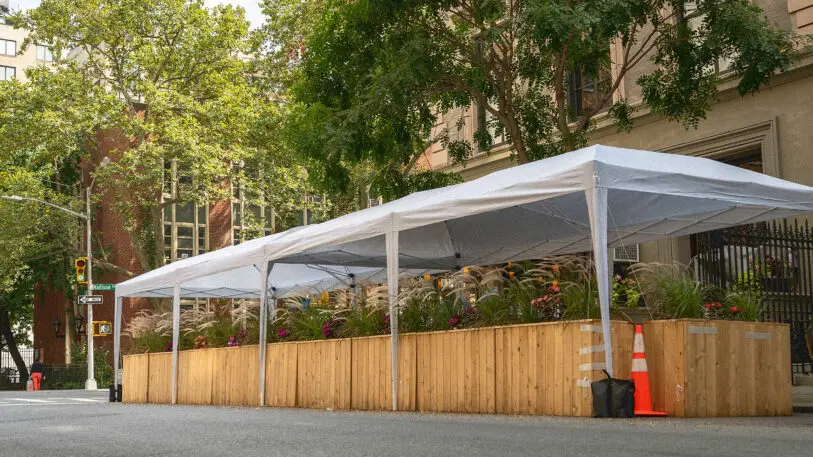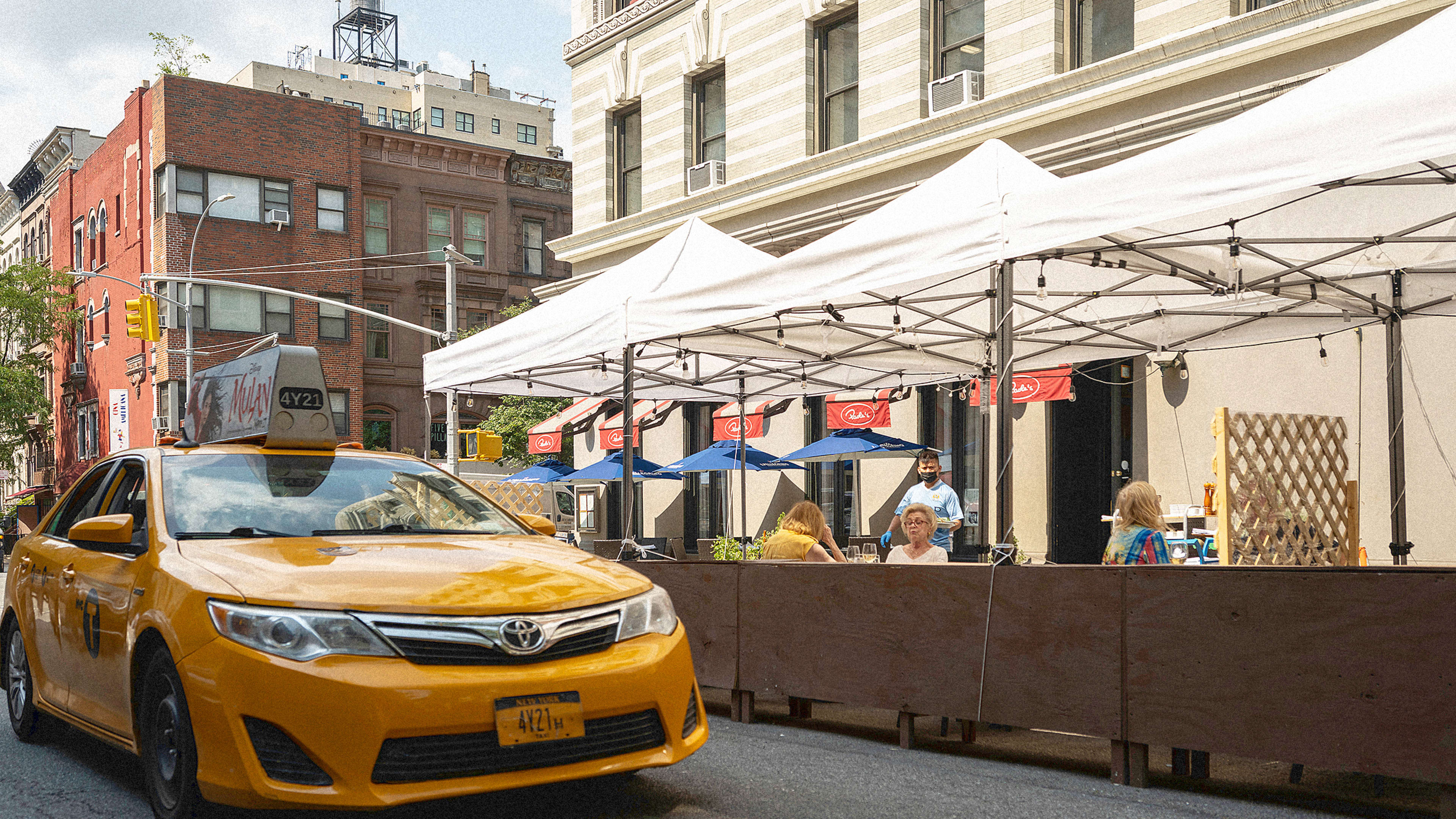Restaurants across the country have moved their seating outside to allow for outdoor dining, but not all outdoor dining structures are equal when it comes to COVID-19 safety. In an attempt to keep outdoor dining feasible throughout the winter, some eateries have outfitted their curbside dining settings with walls—and even roofs—making them more indoors than outdoors, and increasing the risk of spreading COVID-19.
“The more your dining structure looks like indoors, the riskier it is,” says Linsey Marr, a civil and environmental engineering professor at Virginia Tech and an expert in the airborne transmission of viruses. “For every wall you add, you are reducing ventilation and increasing the likelihood that the virus can build up in the air to levels that will lead to exposure and infection of other diners.”

That means that even when dining outside, under an open-air canopy that a restaurant constructed on the street, tables should still be as far apart from each other as possible—certainly more than 6 feet, Marr says, and more likely around 10 feet apart. The safest outdoor dining structures, she says, are ones with only an overhead canopy, because the airflow from the sides will be unimpeded. “But even then you still want tables to be distanced,” she adds, “and if it’s crowded, people to be wearing masks when they’re not eating, and to minimize contact with servers.”
The rules on what kind of structures restaurants can build to house their outdoor dining differ. The New York state guidelines, dictated by Governor Cuomo’s office, allow for a temporary or fixed cover (like an awning, roof, or tent), and if two or more side walls are open, the restaurant also has to follow other dining guidelines, such as six feet between tables and no more than 10 people seated together. But if three side walls (or more) are used, that restaurant’s seating is capped at 25% capacity. In New York City, enclosed structures “such as plastic domes” are also allowed for individual groups, though they still must have ventilation, according to the Department of Transportation. (The city health department has also shared requirements and best practices when it comes to social distancing and restaurant behaviors.)
Igloos or enclosed tents can be safe, Marr says, but only if you’re dining with members of your own household or “pod.” “They isolate air at that table from the air at other tables, but as it’s isolating that air it’s also trapping the air from the people sitting at that table in that tent, so they could be exposed to a lot of each other’s exhaled breath,” Marr says. “So if one person happens to be infected there, it could in fact even be easier for the other people to become infected too.”
Outdoor dining tents that cover a large area on all three sides and overhead could pose the same problems as outdoor dining structures with walls, though the spaces where the walls intersect and at the bottom may be loose enough to allow for some airflow. As for half-walls of plexiglass dividers between tables, those won’t do much to curb the spread, Marr says.

As the weather gets colder, some designs for outdoor dining have also tried to find ways to trap warm air inside while the tables aren’t being used. One such design says it would mimic a greenhouse and keep a tent warm via a “microclimate” created inside that stays put in the evening. But Marr stresses that any windows or doors would need to be open to allow for ventilation, which would mean the structure would start losing heat. While it might be an interesting idea to try to trap some warmth, “You’re going to want that air to exit,” she says.
Ultimately, the safest way to enjoy restaurants right now as cases surge again is to order takeout. If you have to eat out, Marr also suggests staggering your meal times so you’re dining when a restaurant may be less crowded. And if you’re going to dine outside, make sure it’s actually outside. “I would look for things with fewer walls,” she says, “or maybe if they do have walls, then large, open doors and windows, and tables spaced as far apart as possible.” Just plan to bundle up, and maybe bring along a blanket.
Recognize your brand’s excellence by applying to this year’s Brands That Matter Awards before the early-rate deadline, May 3.
